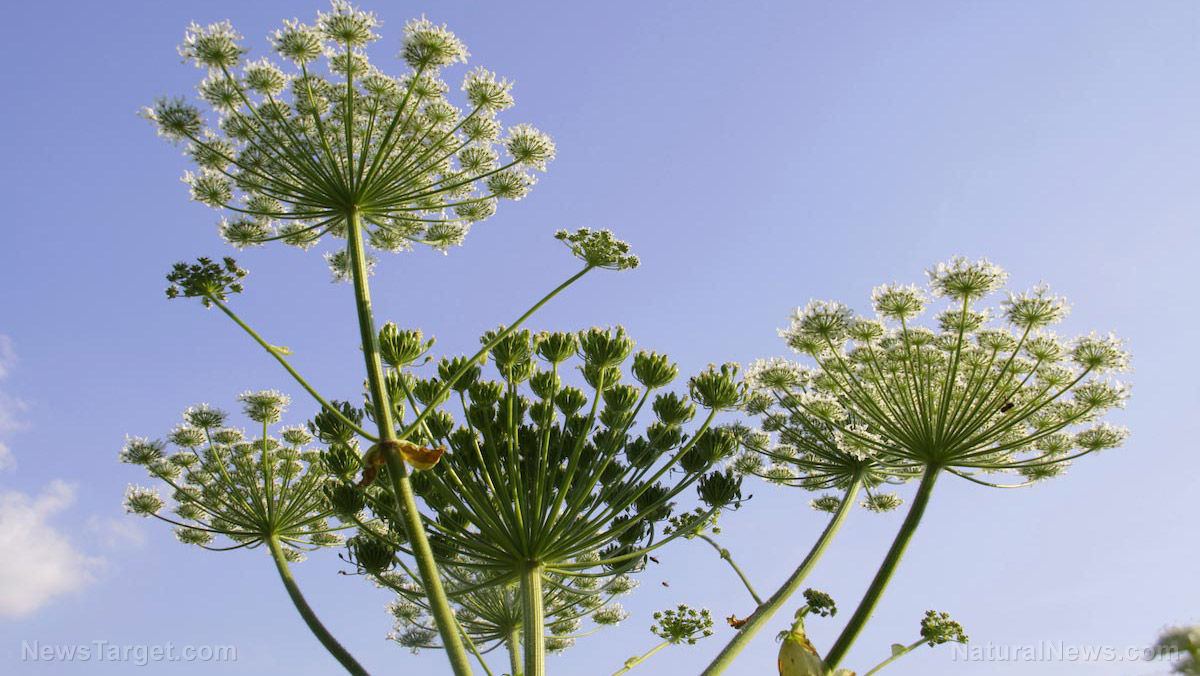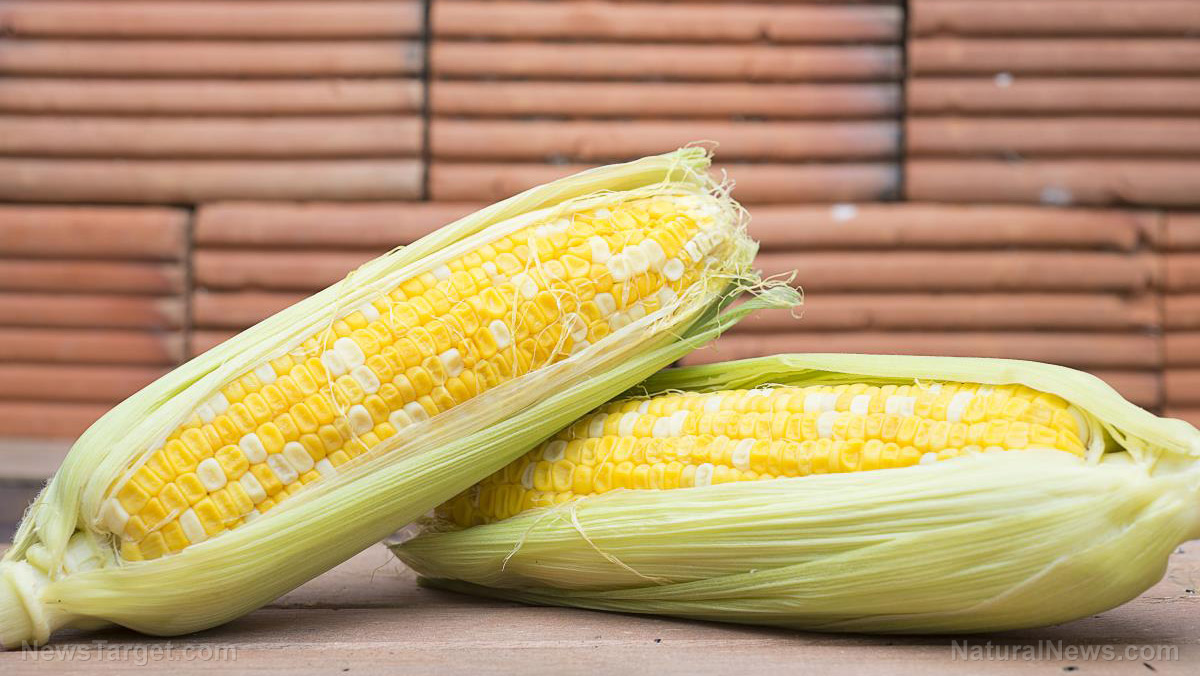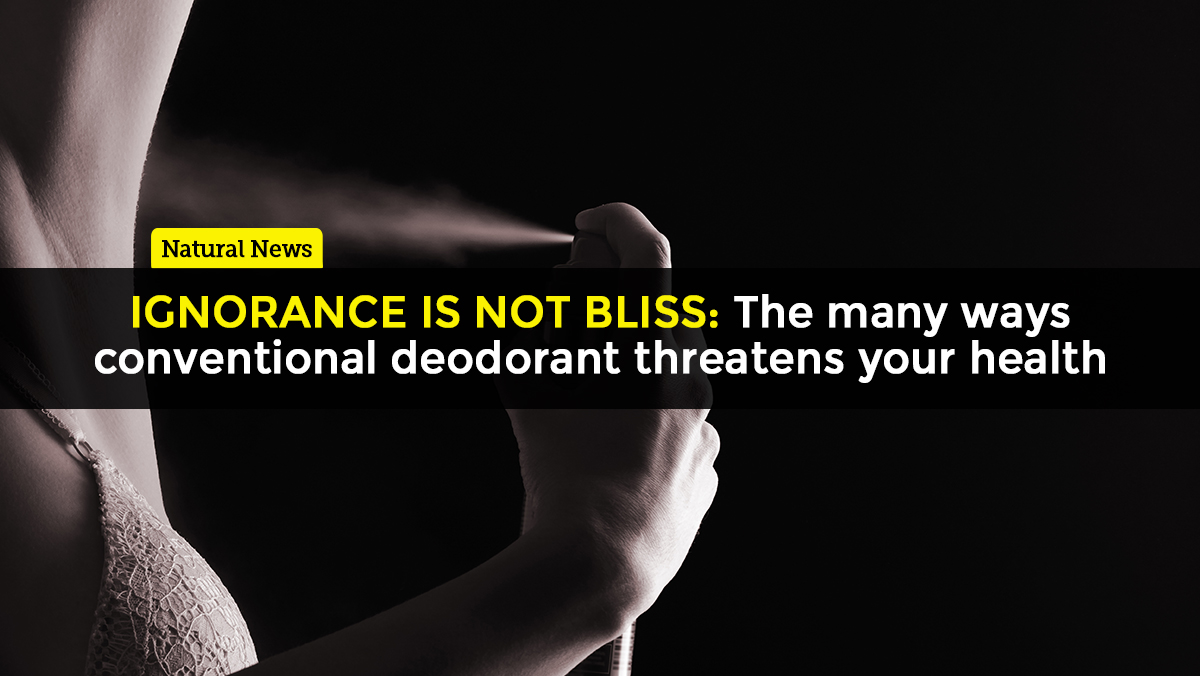How to identify the Giant Hogweed and protect yourself from its poisonous sap
09/04/2018 / By RJ Jhonson

Plants are a prime example that just because something can’t move doesn’t mean it can’t harm you. Take the giant hogweed, for example. This large, invasive plant now terrorizes several states with its highly toxic sap that can cause serious injuries, including burns and complete blindness. Unfortunately, the giant hogweed shares its looks with many – some of which are completely harmless – plants, so knowing how to identify it is crucial to your safety.
The most distinct characteristics of giant hogweed are its size and its cluster of white flowers. These are the very same traits that caused its uncontrolled spread in the United States. Originally from Eurasia’s Caucasus mountain region, it was brought to the U.S. by naturalists as an ornamental plant in the 1900s.
The plant starts out small before it shoots up into its full size after about three to five years. Once it matures, it can spread up to 20,000 seeds over a radius of 30 feet. These seeds can travel farther with the aid of either water or air. Needless to say, it didn’t take long before the plant spread to different areas, disrupting ecosystems and supplanting native plant species.
Today, it is listed federally as a “noxious weed” and has invaded areas in Maine, Massachusetts, Vermont, Connecticut, New York, Pennsylvania, North Carolina, Michigan, Illinois, Washington, Oregon, and most recently, Virginia.
But the nastiness of the giant hogweed does not stop at its being extremely invasive.
Although prolonged exposure to sunlight is still a major health risk, your skin has practically adapted to the ultraviolet (UV) radiation emitted by the sun. This is why you don’t get sunburns just from sunning yourself for a few minutes. Exposure to hogweed sap, however, nullifies your skin’s natural sun protection via a condition called phytophotodermatitis, meaning light sensitivity caused by plants.
Exposure to sunlight after making contact with the plant’s sap can result in third-degree burns, as in the case of one teenager who accidentally chopped down a giant hogweed in his landscaping job. Alex Childress of Spotsylvania County, Virginia, was rushed to the hospital for severe burns on his face. If the sap gets into your eyes, you could go blind.
The key to protecting yourself from giant hogweed is to identify it. Unfortunately, it looks very similar to several other species, some of which are harmless and even medicinal, such as Queen Anne’s lace. Here are some characteristics to take note of:
- Size – As its name suggests, the giant hogweed is indeed anything but small. It stands between seven and 14 feet tall, depending on its growth stage and whether it was cut or mowed.
- Flowers – The plant bears small, white flowers during early summer. These grow in 50 to 150 rays, which cluster in an umbrella that can be one to 2.5 feet across. Look-alikes, like the Queen Anne’s lace, typically have smaller flowers.
- Leaves – The giant hogweed has huge leaves that are jagged and can have a width of up to five feet. The cow parsnip, an almost-clone, has leaves that grow up to 2.5 feet across and is only up to six feet tall.
- Stem – Among the giant hogweed’s most distinct characteristics is its green stem that’s mottled with purple splotches and coated with white hairs. Angelica, a species commonly mistaken for the giant hogweed, has a smooth purple stem. The poison hemlock, on the other hand, has a smooth and waxy stem with purple blotches, although this plant must also be avoided because of its sheer toxicity.
If you do get exposed to giant hogweed sap, the best thing to do is wash the affected area with soap and cold water immediately. You will then need to avoid the sun for at least 48 hours. If the sap made it to your eyes, rinse with cold water and protect your eyes with sunglasses.
Remember that contact with the sap could render your skin sensitive to sunlight for years. It’s best to see a healthcare professional in the instance of a reaction. Finally, you will need to keep the affected area protected from the sun at all times.
Learn how plants interact with humans and their environment at Ecology.news.
Sources include:
Tagged Under: cow parsnip, giant hogweed, giant hogweed blindness, giant hogweed burns, light sensitivity, phytophotodermatitis, poison hemlock, poisonous plant, Queen Anne's lace, toxins, warning, weeds




















